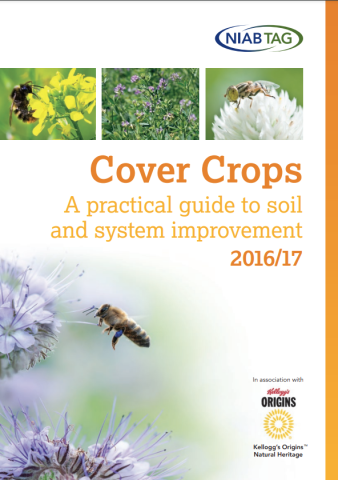Introduction
This NIAB TAG and Kellogg’s OriginsTM publication is a practical guide to the use of cover crops for soil and system improvement. It provides information on the selection and management of cover crop options. Cover crops can (among other things) help to increase resource use efficiency, improve system management/resilience, benefit environmental goals and increase yield/economic returns. OriginsTM farmers are working with NIAB TAG to translate research into practice and to quantify the delivery of key benefits.
The guide provides information based on current understanding on how to select, deploy, manage and make the most of specific cover crops against identified end uses. Guidance has been generated from a range of sources including research, grower feedback and other expert opinion. There may be a need to amend specific practices for individual farm situations.
It also serves to support and inform on-farm decision making and will be developed further in collaboration with field activities and feedback from the OriginsTM farmers.
The focus is primarily on the use of autumn sown cover crops used ahead of spring sown crops, but also features some aspects of cover crop use in wider scenarios. To use the document select the cover crop goal which best describes your objective; then use the decision guides to select an appropriate cover crop species or mix. The cover crop options are suggestions and further ingredients or particular agronomy and management inputs may be required to help tailor the selection to a particular circumstance on farm.
Download the guide below.



